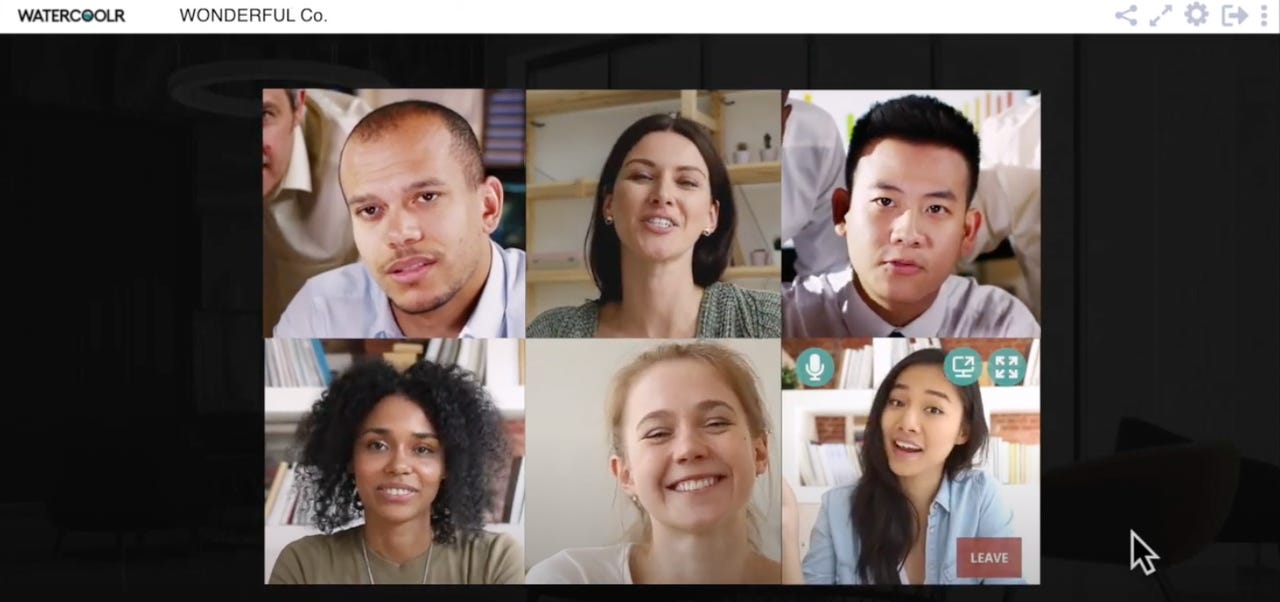Microsoft Teams and Zoom have a brilliant new competitor (if you can lip-read)

Focus. They're talking about you.
What do remote employees really want?
Oh, what does anyone really want?
More time, more money, more love and more avenues to happiness.
Technology, for all its genius, hasn't quite managed to deliver all these things. Especially during the pandemic.
As many employees worked from home, they became used to sitting on Microsoft Teams and Zoom calls for hours every day.
It was tiring. There seemed no time for a casual chat. Or, better still, a deeply-sourced corporate gossip.
You could sit in supposed happy hour events, but only one person at a time could talk. And that person was usually talking for at least half the event, as their greatest joy lies in hearing their own voice.
I was momentarily rendered insensate, therefore, when I was assaulted by a new product. Or, rather, by that new product's PR people.
"You must look at this," they cried. How could I resist such an elegant entreaty?
It turned out this thing is called Watercoolr. And it emerges from a company called Shindig.
Conveniently, there's a YouTube video. It's voiced by the sort of actor who might be more at home voicing an ad for an uncomfortable digestional ailment.
Perhaps, though, this is appropriate casting. For here, we're talking about pain.
"Healthy relationships among coworkers are being strained," whispers the pained voice. "Lunch in the conference room, quick coffee breaks and visits to your favorite colleague down the hall have all been lost."
This man could easily voice the Oscars' In Memoriam segment.
He talks about teamwork. While the video shows a group yoga session. Is this how your office used to be?
But let's get to the point of Watercoolr. It's "a new way to foster community and informal conversation amongst today's virtual workforce."
"How," I hear you bawl, "can it do this?"
Well, your teams congregate all on one screen. Then they pair off and go into private rooms.
Wait, it's not quite like that, though I suppose it could be. Instead, you click on a coworker's image and then offer them a private conversation. Or join the conversation they're already in. It's like one big party where you can network to your heart's content. Or, perhaps, not work.
You might think you've heard a version of this before. I did too. But then I heard the delicious part.
Shindig founder and CEO Steve Gottlieb told me: "Zoom, Teams, Bluejeans and all the others are built around a single audio channel, and a single conversation, in which all participate. It is a simple hub and spoke architecture. This works great for 4, 6 or 8 participants. not so good for 14, 16, 18."
But isn't that why companies have breakout sessions?
Gottlieb explained: "Breakouts, isolated preset private chats are completely different than being in a private chat that is part of shared experience. A breakout doesn't allow you to see all the other things going on in the event or allow you to move easily conversation to conversation or merge groups or bring people into your conversation at will."
So you can see everyone else who's having a little private gossip? Yes, you can. The company says this technology "allows an array of private conversations to go on concurrently, with one able to view but not hear the other conversation groups."
You can watch their lips move but not hear what they're saying. Oh, the possibilities for enlightenment.
Instantly, I see people getting lip-reading training. Finally, they'll be able to "hear" what their coworkers really think of everything. Including, perhaps, them. You'd be amazed what people say about you behind your back.
I envision people "hearing" what someone else has just said about them in another group and immediately trying to join that group to enquire: "What did you just say about me?"
What a brilliant, subversive way of fostering employee engagement and instituting open management.
Bosses turn up to these things too. Don't they?
